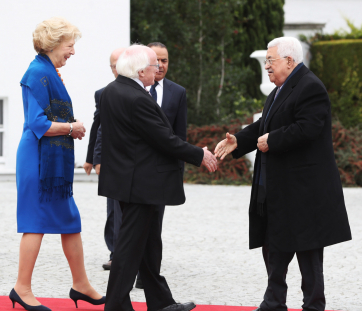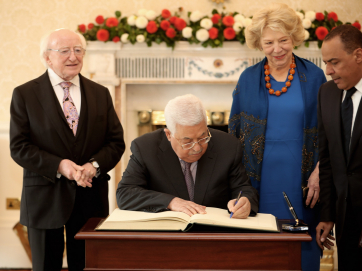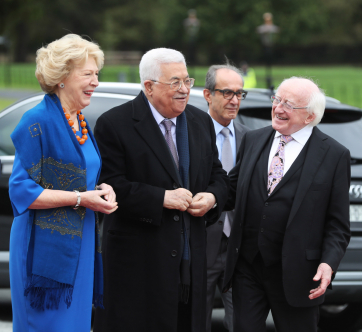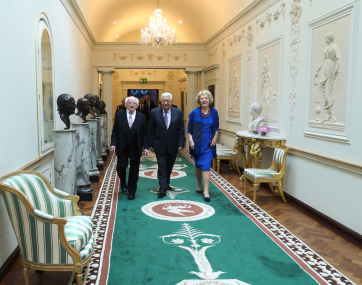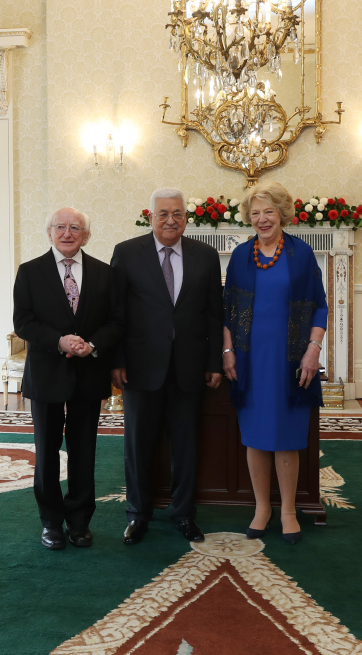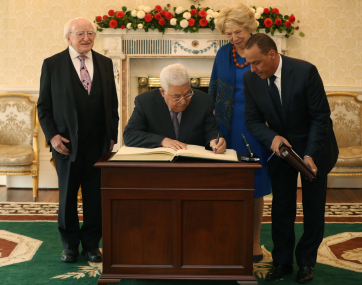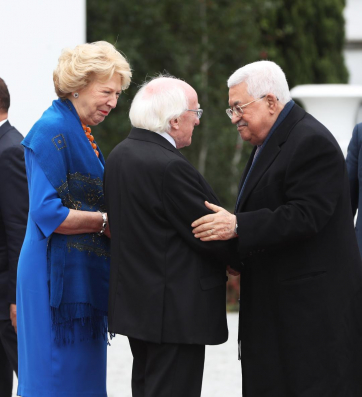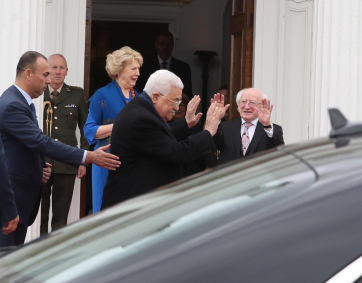Speech at the launch of a commemorative coin celebrating the life of Rory Gallagher
Áras an Uachtaráin, 17 September 2018
Governor,
Members of the Gallagher Family,
Members of the Central Bank Commission,
A chairde,
You are most welcome to Áras an Uachtaráin for this most joyful occasion, as we launch a commemorative coin in honour of one of the greatest musicians in the history of our country – and certainly the greatest guitarist in our history. Sabina and I are delighted to see so many of Rory Gallagher’s friends and family here today. You are most welcome.
First as to coinage and its significance - it was the great chronicler of ancient Greece, Herodotus, the ‘Father of History’, who first identified the ancient Anatolian Kingdom of Lydia as the source of the first minted gold and silver coin. The claims made by Herodotus have been proven correct by archaeological excavations.
Those first coins, crafted from electrum, a naturally occurring mixture of gold and silver, were stamped on one side with the Lion of Lydia, the symbol of that ancient Kingdom and its people. For those coins were not only a practical medium of exchange or store of value, they were a symbol, not only of sovereignty or of a political community, but of the ideals and values which the Lydians sought to elevate. The lion represented strength and courage, just as the Owl of Athena, stamped on the tail of every coin produced by the Delian League, celebrated the cultivation of wisdom and knowledge.
The history of coinage in our own country reflects our own long and unrelenting struggle for national independence. For centuries, the English Crown jealously controlled the authority to issue coinage in Ireland, which either depicted the reigning King or Queen or the crowned Harp, the symbol of royal authority over Ireland.
Jonathan Swift directly challenged that authority in his Drapier’s Letters, coming dangerously – for any challenge to the Crown was dangerous to the man or women who issued it – close to asserting the right of the Irish people to establish their own mint.
The minting of coin by an independent Irish state on behalf of the people did not commence until 1928, over two hundred years after Swift’s polemics. The coinage was issued by the Currency Commission, established under the Coinage Act of 1927, and the design was chosen by a judging panel chaired by W.B Yeats, then a Member of the Free State Senate.
The Currency Commission did not fulfil the functions of central bank, but of a currency board, and our currency remained subordinate to the pound sterling. While a Central Bank was established in 1943, it was not until the 1970s that it began to exercise the full range of monetary policy instruments. The Governor will be pleased, and no doubt relieved, to know that in my present circumstances I do not, except under the most exceptional of circumstances, allow myself to be drawn into matters of monetary and fiscal policy, so I will refrain this morning from any comment on the wisdom or otherwise of either historical or contemporary arrangements.
The designs for the coinage adopted by the Currency Commission by the Free State remained with us until we joined the Monetary Union and adopted the Euro as our currency. Of course, the harp, the symbol of the sovereignty of the Irish people, still remains etched on every Euro coin issued on behalf of the Minister for Finance by the Central Bank of Ireland.
In 1927, W.B. Yeats and his fellow judges assumed a heavy responsibility, to decide those representations that would best express the spirit of the new state. In his own words, Yeats and his committee chose:
“birds and beasts . . . what better symbols could we find for this horse riding, salmon fishing, cattle raising country?”
In our time, I would ask what better symbol could we find for our creative, artistic, freedom-loving country than an image of one of our most iconic musicians, Rory Gallagher? I am so pleased that the Central Bank, assisted by the Numismatic Advisory Committee and spurred on by members of the public, decided to honour and commemorate Rory in this way.
Rory Gallagher was born in Ballyshannon in County Donegal, although I know that Cork people often try to claim him because his family moved down. Indeed, you can find a statue of Rory in Ballyshannon and you can find one just off St. Patrick’s Street, just as you can find a street named after Rory in Dublin. I know that it is intended to erect another statute outside Ulster Hall in Belfast, which is so appropriate given Rory’s long association with a venue to which he brought light, hope and the blues during the darkest days of the Troubles.
Rory began his career, like so many musicians in the 1960s, as part of the showbands which toured the ballrooms of Ireland. They were a representative of the vibrant culture of the 1960s, when so many Irish people were hungry for knowledge of the world, for new books, new music, new culture, new experiences. Each of the members of Impact, Rory’s showband, were expected to adopt the style of one of their heroes. Rory Gallagher chose Chuck Berry, who drew on the deep tradition of African-American music to become one of the pioneers of rock and roll. Rory would later star and record with Chuck Berry. I believe that there is a wonderful YouTube clip of Rory performing a cover of Nadine on the German TV show Rockpalast in 1982.
Rory enjoyed success in Ireland and internationally with Taste, a blues band he formed in 1965, with whom he recorded three albums, and later with Gerry McAvoy and Wilgar Campbell, with whom he performed under the name ‘Rory Gallagher’, a reflection of the following he had gained amongst rock and roll fans across the world. Already by the 1970s he was being hailed as the best guitarist in the world.
Those who were fortunate to attend his gigs during the 1970s and 1980s can attest to the vitality and vibrancy of those concerts, as well as his sheer talent and excellence on the guitar. Indeed, so complete was his mastery it is now impossible to mention the Fender Stratocaster without thinking of Rory Gallagher.
Rory was not only popular for his ability – though he was one of the greatest musicians of his age. As all who knew him will tell you, he was warm, generous, kind and compassionate – indeed so much so that he belied all the stereotypes of the ‘rock star’. At concerts, he was never distant but was always glad to be among those attending, before and after.
He remained unmoved by the general musical fashions of his day, forging his own distinctive path, creating a fusion of folk, blues and rock and roll that, in its sheer technical brilliance and artistry, remains unsurpassed today, and that I suspect will never be equalled.
Before we move to the coin presentation ceremony, may I thank Michael Guilfoyle for his wonderful design, which captures not only the image but the spirit of Rory Gallagher.
May I also extend my gratitude to Mr Vincent van Hecke, the Chief Executive Officer of the Royal Dutch Mint, for the expertise and commitment that his team brought to production of the commemorative coin.
Finally, may I say that I am truly delighted to have the opportunity to present Dónal Gallagher with a commemorative coin honouring his brother. Dónal, you have been a wonderful custodian of the memory and legacy of your brother, something for which I believe the whole country should be grateful. I know that you were central to design of the coin.
May it stand as a representation of the very best aspirations of our republic: for the centrality of our culture, in all its diversity; the generosity and solidarity of our people with each other and with other peoples; and the possibility of achieving excellence in all fields of endeavour.

